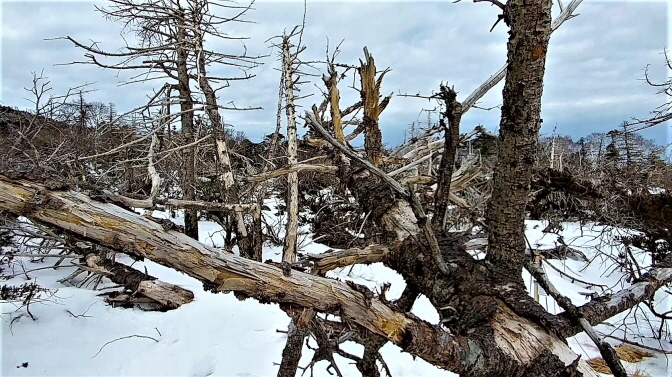
Green Korea said as up to 90 percent of the needleleaf trees growing on Mount Halla have been wiped out. (image: Green Korea)
SEOUL, Apr. 5 (Korea Bizwire) — Experts are calling on emergency measures to save needleleaf trees in alpine regions, such as Mount Halla, as they are dying off in massive numbers due to climate change.
Green Korea, a South Korean environmental organization, said as up to 90 percent of the needleleaf trees growing on Mount Halla have been wiped out.
“The trees are on the verge of extinction,” said Green Korea.
The organization, since April 2016, has been monitoring various kinds of needleleaf trees growing in major subalpine regions (1,500 to 2,500 meters above sea level), and determined that Korean firs have been most affected by the changes in temperature.
Korean firs are a species unique to South Korea. They grow primarily on Mount Halla as well as Mount Jiri.
The International Union for Conservation of Nature and Natural Species (IUCN) has classified the Korean fir as an endangered species.
In contrast, the South Korean government has not yet placed the species on its endangered list, on grounds that there are still a considerable number of Korean firs across the country in absolute terms.
Khingan firs, another most representative needleleaf tree in the country, are also dying off quickly on Mount Taebaek, Mount Odae, and Mount Seorak. Green Korea pointed to climate change as the cause of death en masse.
“At this speed, the trees can face the possibility of extinction,” said Seo Jae-cheol, a subject matter expert at Green Korea. “If this continues, the balance between the ecosystem as well as natural diversity will break down.”
Green Korea called on the South Korean government to designate Korean firs as endangered species to save them.
H. M. Kang (hmkang@koreabizwire.com)






